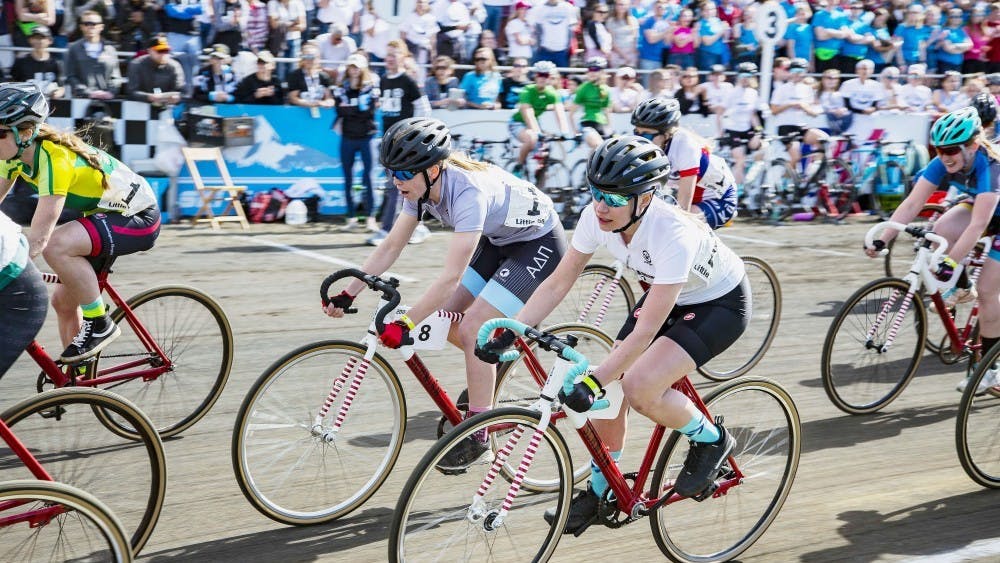While admiring the show’s cinematic approach to covering the event, Miller said, they began discussing how cool it would be to cover the Little 500 that way.
Both had extensive experience covering Little 500 as IU students.
“We were both wondering why no one had done this yet, so me and Pete were like, “We’re going to do this,’” Miller said.
‘One Day in April’ is an in-depth look into two women’s teams, Teter and Delta Gamma, and two men’s teams, Cutters and Delta Tau Delta, and their preparation for the ?2013 Little 500.
Selecting which teams to ?follow wasn’t very complicated, Miller said. They decided to follow the winning teams from 2012, Delts and DG, and two teams that had won a lot ?recently.
Teter had a three-year win streak ended by DG, while Delts broke ?Cutters’ five-year run.
The project began with a core group of five. In addition to Miller, the director, and Stevenson, were Ryan Black, Kirsten Powell and Aaron Bernstein. Powell is an IU grad who rode in the Little 500 for DG.
By race day, volunteers and IU journalism students increased the number to 22.
Miller said he thought having a team with deep alumni connections to the race added understanding of what makes the race special and that the documentary could not have been made without tapping into these connections.
These connections helped create a cooperative relationship with the IU Student Foundation and Little 500 Race Director Jordan Bailey, Miller said.
Stevenson used his connections to snag Zach Osterman, a close friend and IU grad who rode for and now coaches Sigma Alpha Mu. Osterman’s voiceovers provided the narrative link between individual stories depicted in the documentary.
“Zach has a really interesting voice that helps the audience know what was going on,” Stevenson said. “He became his own character in the documentary.”
Throughout the course of filming from January 2013 to May 2013, Miller and his team amassed hundreds of hours of film.
The first cut of the documentary was seven hours long, Miller said.
“You have to shoot as much as possible,” Stevenson said. “With documentaries, you never know when the big moments will happen.”
“It took a while for the teams to open up and trust us,” Miller said. It wasn’t until the first trailer came out that the riders began to truly understand what the documentary was about.
Trust opened the door to many human moments with the riders. On the way to Qualifications, DG’s riders sang along to Celine Dion’s “It’s All Coming Back To Me Now” to relieve tension they felt for the upcoming event.
Miller and the others filming built professional relationships with the teams but kept themselves removed and as objective as possible.
“We needed to be able to let them know that we are going to make the best decision to help tell the most accurate version of the story,” ?Miller said.
One of these decisions was showing the men’s race concurrently with the women’s race, Miller said, because putting one last would indicate that race was the climax and thus more important than the previous race.
The documentary focuses on the riders and coaches in attempts to understand what motivates them and why they sacrifice so much, Miller said.
Kayce Doogs, a senior in DG, put her desire to win back-to-back Little 500’s before her physical health, forgoing surgery to repair the lack on cartilage in one of her knees in order to race.
“People who watch this, whether they are Hoosiers or not, will have a perspective on what it takes,” Stevenson said. “All the hard work for the Little 500 comes when no one is watching.”
This story has been updated.





